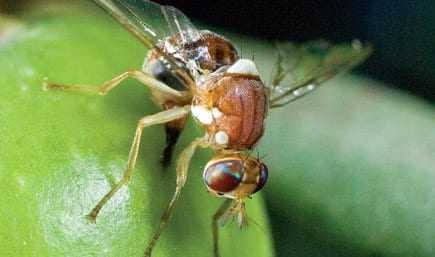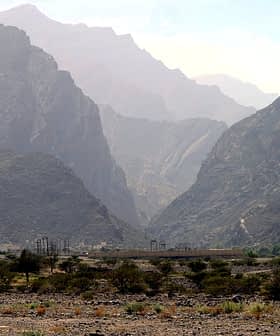
Lack of rain is not the only reason forecasts of another bumper year of olive oil production are viewed cautiously in Spain – the olive fruit fly has reared its fearsome head earlier and in greater numbers.
Thanks to a relatively milder summer, Bactrocera oleae has already hit much of the country’s olive oil sector with vigor.
In the Designation of Origin Sierra de Segura, in north-eastern Andalusia, the number of olive flies trapped during recent field sampling varied between three and fifteen times higher than in previous years.
In a statement, the DO said that while the norm for the area was three generations of the fly per year, 4 – 5 generations were likely this year. The increase in the olive fly population and earlier onset of the infestation have resulted in a tripling of the area that will be covered by control measures including aerial spraying. By September 16 last year, just over 10,710 hectares had been treated in the local area, compared to 30,810 hectares this year.
The DO has urged olive growers not to resort to individual measures, saying that collective control is more effective and cheaper. It lamented that government subsidies for the treatment now cover only about a third of the cost, down from 75 per cent in the last two years.
Andalusia’s regional government provides subsidies for olive fly control measures from June to November. This applies to aerial spraying except where more than a quarter of a plantation is dedicated to organic cultivation, in which case ground treatment must be used. And Extremadura’s regional government, which also subsidises control, has this year designated 175,000 hectares of olive plantations as subject to monitoring and treatment.
Control stations in 190 locations have been set up to assess adult fly populations via McPahil and sticky yellow chromotropic traps. Meanwhile, larvae numbers in olives are being assessed by biologists. Where deemed necessary, treatment is via low-volume, large drop aerial spraying of a traditional insecticidal bait.
In the Castilla-La Manch region, 54,167 hectares will be sprayed this year, mainly in the provinces of Toledo and Ciudad Real, where there is a total of 203,717 hectares of olive plantations. Agricultural lobby group ASAJA has called on Castilla-La Mancha’s agriculture minister to source an ecological spray to also ensure eradication in areas of organic production – a total of 42,449 hectares.
Also see: Andalusian Farmers Battling Fruit Fly








